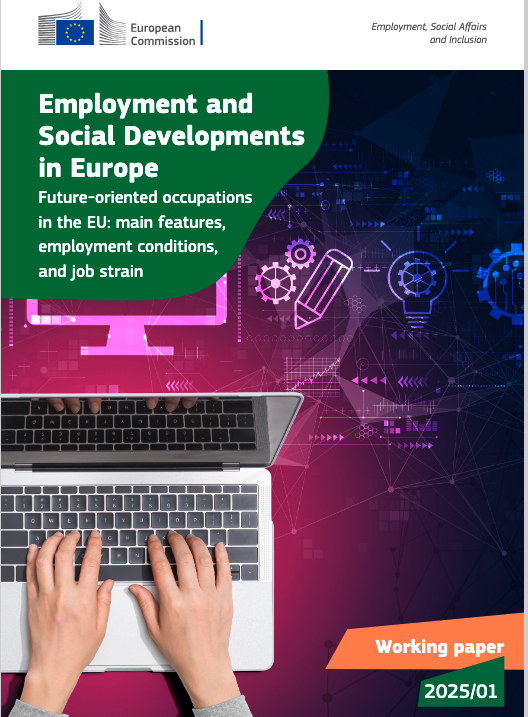Future oriented Occupations in Europe

The European Commission’s working paper on future-oriented occupations in the EU, offers insights into the evolving landscape of work. The way we work is changing, the paper says. due to developments associated with the digital and green transition as well as demographic change, as a driver of current and future labour shortages.The paper aims to shed light on job holder profiles, their employment conditions, and some aspects of job quality experienced by workers in occupations of relevance for these transitions. It looks both at job groups relevant for one single transition, which are termed ‘occupations of interest’, and relevant for two or more of the three transformations, which are defined as ‘future-oriented’ occupations. Furthermore, as part of the digital transition, we also specifically consider occupations more likely to be exposed to the impacts of AI. Thereby the analysis aims to provide an early indication of the types and characteristics of jobs and subgroups of workers that may be affected by these technological advances.
Here is a quick summary of some of the findings:
Transformative Transitions:
▪️The digital and green transitions, along with labour shortages, are reshaping the world of work, impacting job content, required skills, and working conditions.
Defining the Future:
▪️The report categorizes occupations into ‘occupations of interest’ (relevant to digitalisation, greening, or labour shortages) and ‘future-oriented occupations’ (relevant to two or more of these transformations).
Digital Skills are Key :
▪️Digital skills intensity is a crucial factor in classifying occupations, with a focus on the impact of AI across sectors.
Green Jobs Growth :
▪️The green transition is expected to create jobs, but also requires significant upskilling and reskilling of the workforce.
Labour Shortages Persist :
▪️Addressing labour shortages remains a key challenge, with a focus on understanding job quality dimensions and employment conditions in shortage occupations.
Gender Equality Matters:
▪️Gender segregation is evident across many future-oriented occupations, highlighting the need for policies promoting gender balance in the workforce.
Age Balance is Important :
▪️Core age workers (25-55) are more involved in future-oriented occupations, emphasizing the importance of lifelong learning and flexible work arrangements.
Job Quality Varies:
▪️Job strain and other job quality dimensions vary across occupations, with digital-intensive and AI-exposed jobs generally reporting lower strain.
Training is Essential:
▪️Access to and participation in training is crucial, especially for workers in future-oriented occupations, to adapt to new technologies and work processes

